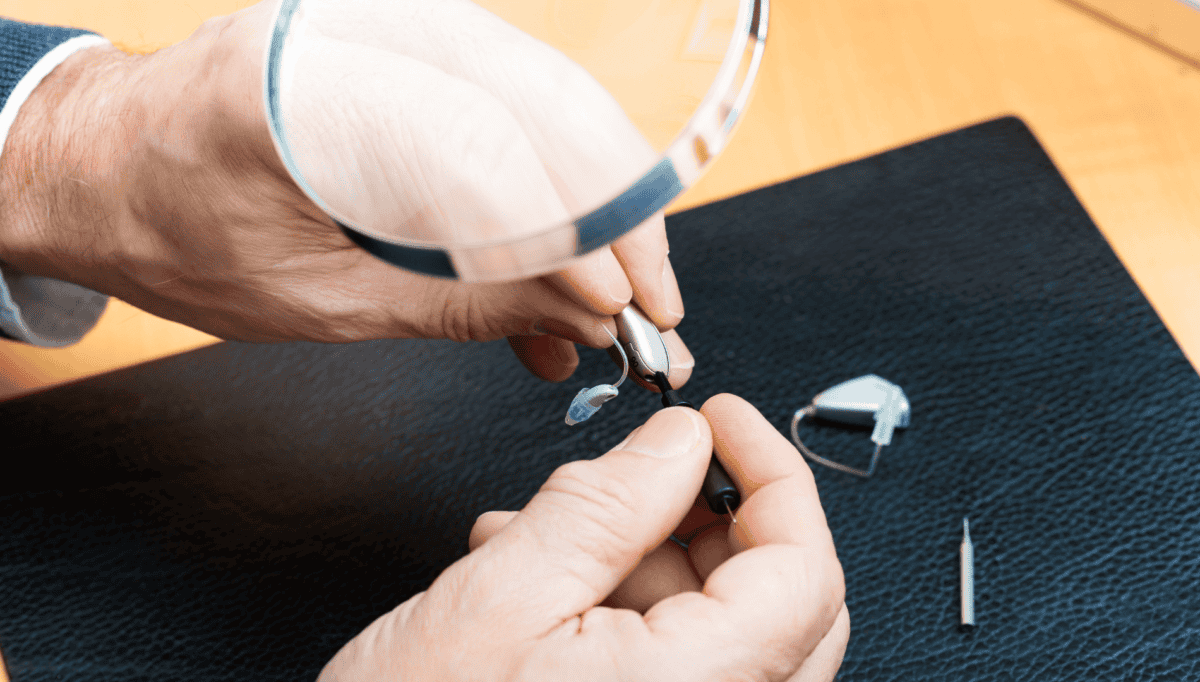- Why DIY Repairs Could Harm Your Hearing Aids - April 15, 2025
- Hearing Protection Solutions for Teamwork - April 6, 2025
- The Role of ABR in Identifying Auditory Neuropathy Spectrum Disorder - March 27, 2025
A tiny malfunction in a hearing aid can be frustrating, especially when it disrupts conversations, work, or daily routines. The temptation to fix the issue at home with a quick internet search might seem harmless. However, attempting a DIY hearing aid repair could turn a minor issue into a costly disaster, leaving the device damaged beyond repair.
Hearing aids are delicate pieces of technology designed to amplify sound with precision. Even a small mistake, like using the wrong tool or cleaning method, can affect their performance. Instead of solving the problem, self-repair attempts often lead to more significant damage, shortening the device’s lifespan.
Delicate Internal Components Can Break
Hearing aids contain tiny, intricate parts that work together to process and amplify sound. One wrong move, such as applying too much pressure or using non-approved tools, can cause internal components to break. Once these parts are damaged, they may not function properly even if the device appears intact on the outside.
Manufacturers design hearing aids with specialized materials that require professional handling. Opening the device without the right knowledge can dislodge connections or expose sensitive electronics to dust and moisture. A simple mistake can lead to costly repairs or even the need for a complete replacement.
Moisture and Debris Can Worsen the Issue
Cleaning hearing aids improperly or exposing them to moisture during a DIY fix can create bigger problems. Liquids, including household cleaners or rubbing alcohol, can seep into the microphone or speaker openings, leading to corrosion or electrical failure. Even small amounts of condensation from breathing or handling the device with damp fingers can impact sound quality.
Debris from cotton swabs, paper towels, or compressed air can become lodged in the tubing or microphone ports. Instead of improving functionality, these materials can clog the device and make it harder for sound to pass through. Professional cleaning ensures that delicate components remain free from obstructions and function as intended.
Incorrect Repairs Can Void the Warranty
Hearing aid manufacturers provide warranties to cover defects or malfunctions, but DIY repairs can void these protections. Once a device is opened or altered in an unauthorized way, warranty coverage is often no longer valid. This means that if a mistake occurs during a self-repair attempt, any future professional repairs will be an out-of-pocket expense.
Authorized technicians have the training and tools to fix hearing aids without violating warranty terms. Choosing professional repairs ensures the device remains covered, reducing the risk of additional costs. Warranty protections exist to provide peace of mind and should not be compromised by at-home fixes.
Professional Repairs Offer Long-Term Reliability
Seeking professional help for hearing aid issues provides long-term benefits. Trained hearing health professionals and technicians can diagnose problems accurately, ensuring the correct solution is applied. Their expertise extends beyond repairs, as they can also offer maintenance tips to prevent future malfunctions.
Investing in professional repairs helps protect the integrity of the hearing aid. Regular servicing ensures that minor issues are caught early, preventing costly replacements. Relying on experts keeps hearing aids functioning at their best, improving overall hearing health.

